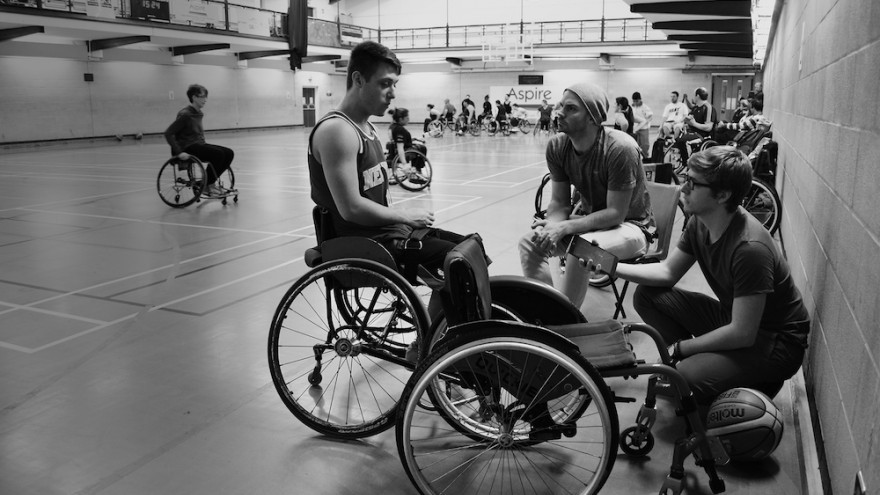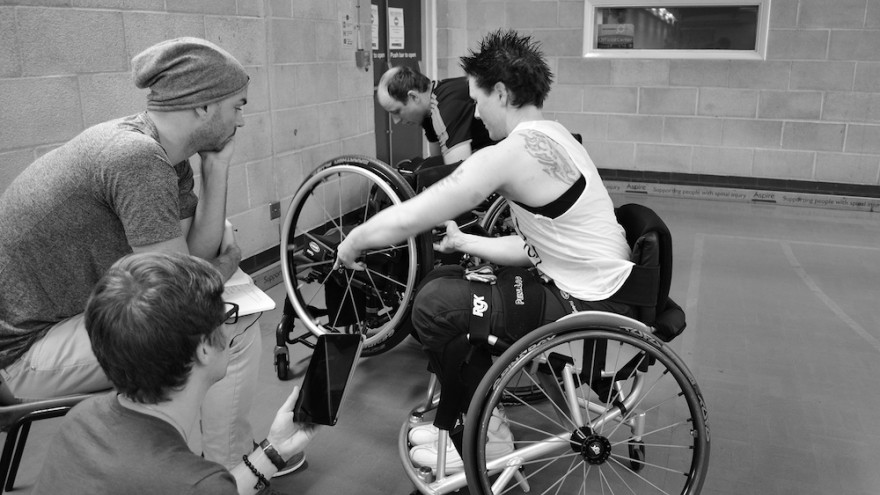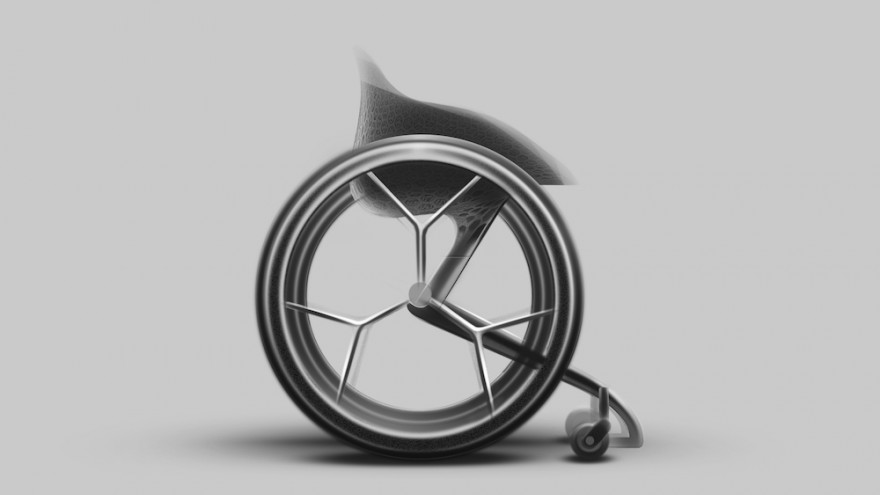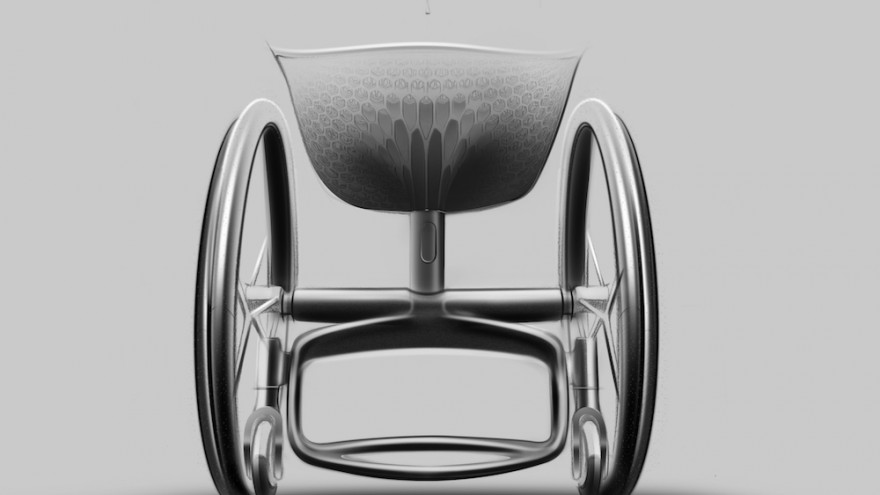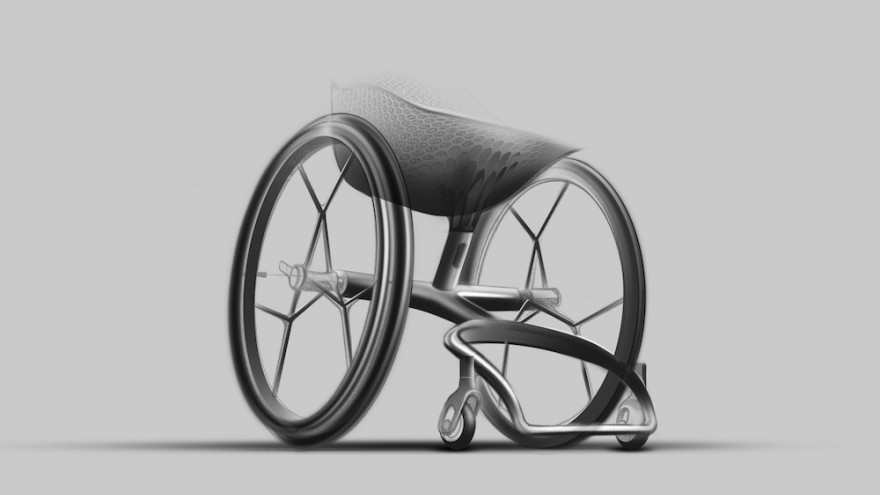Benjamin Hubert’s Layer studio has designed the world’s first 3D-printed consumer wheelchair, which is set to launch on 26 May at Clerkenwell Design Week in London. The GO wheelchair is the result of a six-month long research project by Layer’s new research devision LayerLAB in collaboration with 3D-printing company Materialise, various medical professionals and of course wheelchair users.
The motive behind the project is to get rid of the disadvantages associated with the standard, heavy-duty wheelchair to design a more human-centred vehicle that has the ability to significantly improve wheelchair users’ quality of life.
Materialise’s expertise in 3D-printing technology has enabled the studio to create a wheelchair that is tailored to the biometrics of different users with different disabilities. The customisation of the wheelchair’s seat and foot bay help to create a more comfortable and functional means of getting around.
The innovative wheelchair is made available to any wheelchair user through a specialised companion app. To place an order, a user supplies his or her biometric information, which is used to create a body map that is then translated into 3D digital data. The GO app software processes this data to draw out the unique blueprint of the individual’s GO wheelchair, which is customised to his or her exact body shape, weight and disability.
Once the wheelchair has been ordered, it can be manufactured and delivered within two weeks – a vast improvement on the six to eight week turn-around time of other customisable wheelchairs. The app also allows a user to participate in the design process and pick different colourways and additional features that may be needed.
The customisation process combined with the lightweight and more advanced materials used in the manufacture of the design means that a user will be getting a more agile, efficient and comfortable wheelchair made to fit to his or her form. This is a big deal considering that most wheelchair users stay seated for up to 18 hours a day, subsequently suffering pressure sores and eventually arthritis.
In addition to the actual wheelchair and app, Layer created the GO glove system. The gloves lock into the tactile surface of the push rims to release the stress of self-propulsion and deliver greater power-to-push ratio. Apart from improving mobility, the glove system also decreases the risk of hand injuries and arthritis in the shoulders.

